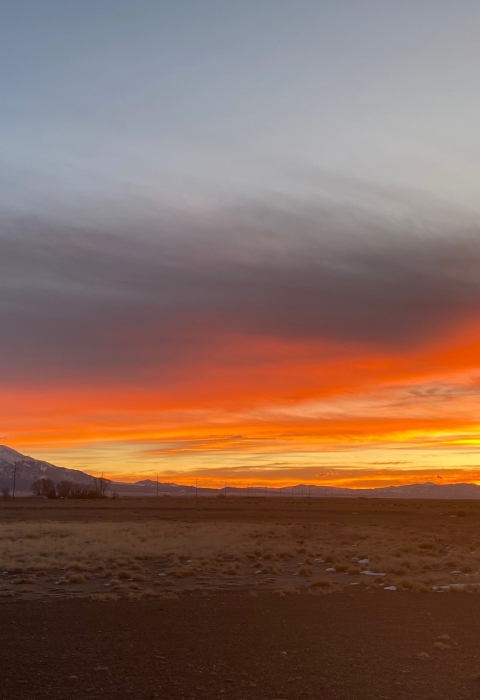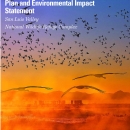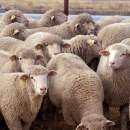What We Do
Wildlife conservation is at the heart of the National Wildlife Refuge System. It drives everything on U.S. Fish and Wildlife Service lands and waters managed within the Refuge System, from the purposes for which a national wildlife refuge national wildlife refuge
A national wildlife refuge is typically a contiguous area of land and water managed by the U.S. Fish and Wildlife Service for the conservation and, where appropriate, restoration of fish, wildlife and plant resources and their habitats for the benefit of present and future generations of Americans.
Learn more about national wildlife refuge is established to the recreational activities offered to the resource management tools used. Using conservation best practices, the Refuge System manages Service lands and waters to help ensure the survival of native wildlife species.
Management and Conservation
Refuges deploy a host of scientifically sound management tools to address biological challenges. These tools span active water management to wilderness character monitoring, all aimed at ensuring a balanced conservation approach to benefit both wildlife and people.
Alamosa National Wildlife Refuge provides food, cover, and breeding habitat for migratory birds and resident wildlife. The Refuge conserves and enhances a mixture of wetland and desert habitats found in the area to accomplish these goals. Habitat management tools used on the Refuge include water and wetland management, weed control, haying, grazing, and prescribed fire.
Water
With only 7 inches of precipitation annually, water is the lifeblood of the San Luis Valley. Spring snow melt from the Sangre de Cristo Range and San Juan Mountains supply most of the water to the valley, which feeds the Rio Grande, agricultural ditches, and natural areas. This inflow of water creates a unique mosaic of wetland and desert habitats, each with its own plant and animal community. The Refuge includes more than 15 miles of critical riparian riparian
Definition of riparian habitat or riparian areas.
Learn more about riparian habitat adjacent to the Rio Grande. For nearly 150 years, farmers have diverted flows from the river to irrigate the arid landscape of the San Luis Valley. This practice has significantly limited the river’s flow pattern, altering its ability to move across the landscape as it had done for thousands of years. These reduced flows considerably impact the riparian areas. We use water from ditches that run mostly parallel to the river. These ditches were constructed in the early 1900s for irrigation. The water is used to simulate the annual flooding which historically occurred across the landscape and to manage thousands of acres of wetland habitats for the benefit of migratory birds. Numerous dikes and other water control structures send water to a patchwork of diverse wetland habitats ranging from shallow wet meadows to open water. Levels in the ponds and wetlands change to provide birds with adequate aquatic vegetation and invertebrates for food and escape cover.
Grazing and Burning
Grazing livestock, haying grasses, and conducting prescribed burns are management tools we use. From helping to control invasive plants to providing forage for wildlife, these tools help to enhance habitats for plants and wildlife on the Refuge.
Invasive Weeds
Invasive weeds are a threat to the Refuge. Applying herbicides, using water management, and grazing livestock are used to combat invasive weeds. Tall whitetop (Lepidium latifolium) is one of the most problematic. It thrives in saline moist soils and is incredibly adaptable. During times of environmental stress, such as drought, Tall whitetop can infest natural habitats, frequently out competing native vegetation and turning an area into a monoculture of weeds.
Our Services
Wildlife Viewing and Photography
Observe the natural wonders of the Refuge by driving, hiking, or biking the Wildlife Drive. Hike the Rio Grande and Bluff Nature trails. Observe the expansive view of the Rio Grande floodplains and surrounding mountains at the Bluff Overlook. The best time to view migratory water birds along the auto-tour route is from the beginning of April through early fall when the wetlands are flooded. Along the nature trails you will see a wide variety of habitats, from lush grasses to dense stands of willow, to towering cottonwood trees. See the Rio Grande Nature Trail brochurefor seasonal descriptions of the riparian riparian
Definition of riparian habitat or riparian areas.
Learn more about riparian habitats and the wildlife you might see. The Refuge Wildlife List provides information about nesting and seasonal abundance of birds and a listing of resident wildlife.
Hunting
Hunting is a tradition on the Alamosa National Wildlife Refuge. Most hunting opportunities are in wetlands and along the Rio Grande. Portions of the Refuge are open to hunting in accordance with Federal, State, and local regulations; the most restrictive regulations apply on the Refuge. For information about hunting on Alamosa National Wildlife Refuge, review our Alamosa Refuge Hunting & Fishing brochure. You may also contact the Refuge at 719-589-4021.
Fishing
Fishing is only allowed in the area adjacent to the Chicago Dam on Alamosa National Wildlife Refuge. Fishing is closed from April 15 to September 1 in the seasonal closure area to protect the southwestern willow flycatcher, a federally endangered bird, during the breeding season. Access to the fishing area must be from parking area 7 or from the Malm Trail. Do not trespass on private lands. For information about fishing on the Alamosa National Wildlife Refuge, review our Alamosa Refuge Hunting & Fishing brochure. You may also contact the Refuge at 719-589-4021
Interpretation
There are interpretive panels at the visitor center kiosk and at the Bluff Overlook to help you make your own connection to the Refuge’s natural environment.
Environmental Education
Please contact the Refuge at 719-589-4021 if you are interested in bringing a group out to the Refuge for an educational program.
Law Enforcement
U.S. Fish and Wildlife Service law enforcement officers have a wide variety of duties and responsibilities. Officers help visitors understand and obey wildlife protection laws. They work closely with state and local government offices to enforce federal, state and refuge hunting regulations that protect migratory birds and other game species from illegal take and preserve legitimate hunting opportunities.


